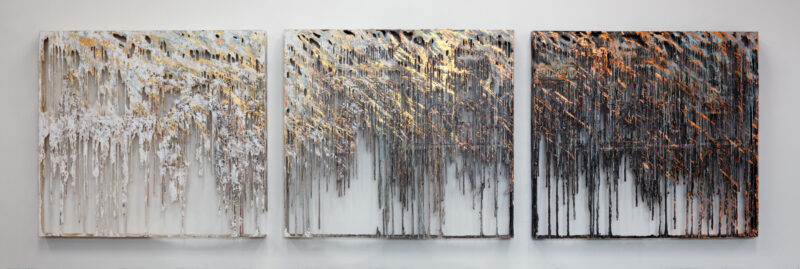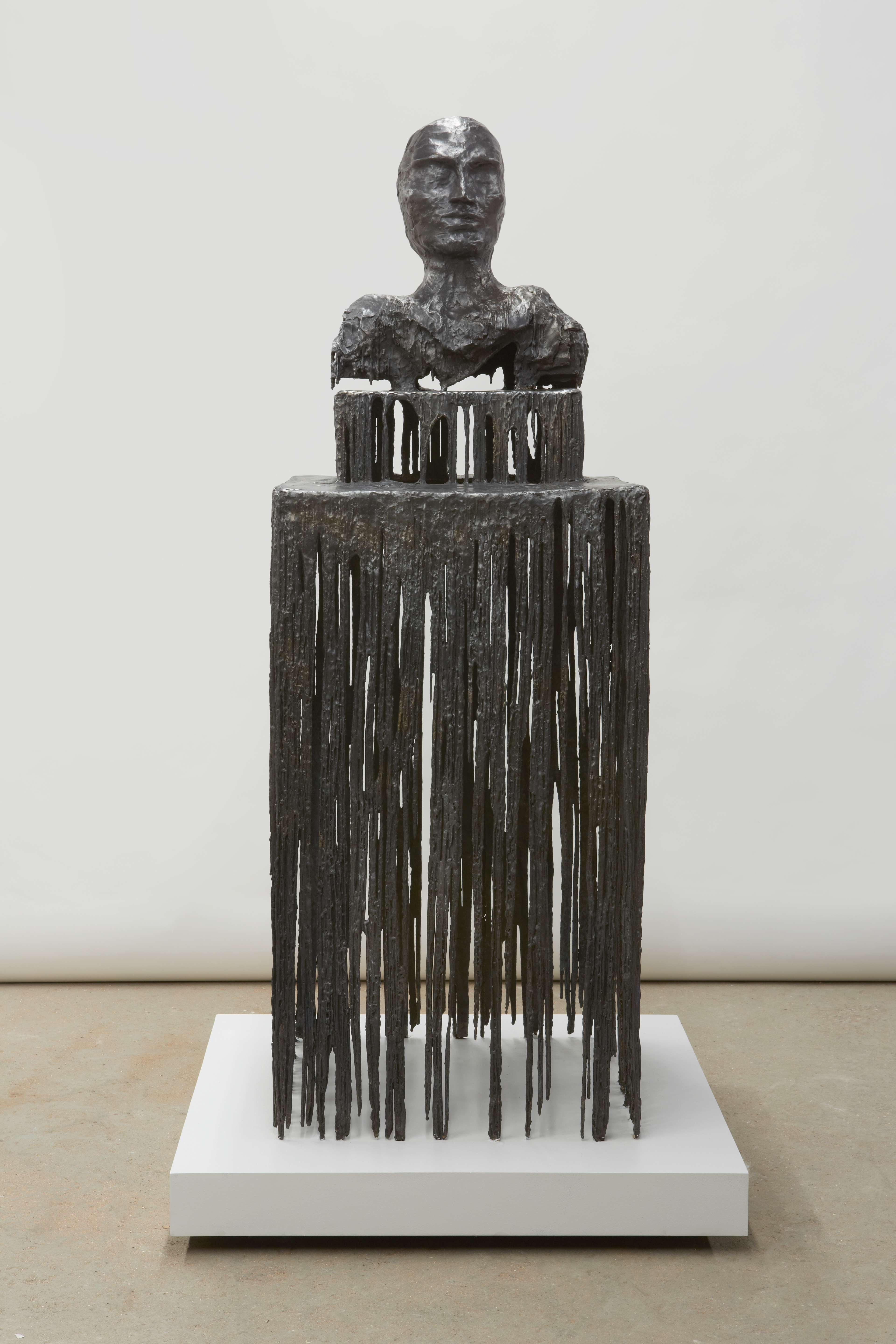The Movement of Identity at Archive of Longings
Review of Diana Al-Hadid: Archive of Longings at the Henry Art Gallery
Written by Teen Writer Aamina Mughal and edited by Teen Editor Esha Potharaju

When you walk into Diana Al-Hadid’s Archive of Longings, you are greeted by what appears to be a block of glittering ice—you’ll later learn that this mountain-like sculpture is called “Gradiva”. The thirteen sculptural pieces speak, in the most genuine way, to the different ways that the female identity can present itself. The “block of glittering ice” alludes to the title character from Wilhelm Jensen’s novella Gradiva, who was famously analyzed by psychologist Sigmund Freud. Gradiva became known in the world of surrealist art as “the woman who walks through walls,” and Frued recognized her as a modern mythical figure. Al-Hadid uses this imagery to highlight the elusive nature of desire, to show the viewer how women are perceived, and to call out where that narrative is lacking. She expertly captures the individual stories of women through imagery like that of “Gradiva”. At the same time, she focuses on the body, and how those two facets of identity, the physical presence and the cultivated experience, work together to navigate the world.
Immediately to the right of the exhibit’s entrance, there’s a sculpture of a staircase titled “Moving Target”. On a plaque, Al-Hadid writes that she creates things on a large scale to show that the physical labor it takes to make art is just as important as the mental labor. Perhaps the most striking of these large-scale pieces is the archway called “Smoke Screen” that is built into the wall, where peeled resin drips like icicles. When she blurs the lines between function and beauty—art and architecture—she works to “obscure a single narrative”.
Throughout the exhibit, there are inexplicable severed legs entitled “Subduction” and “Magmatic”. The legs are made of green bronze which melts over the side of the block they rest on. The word subduction refers to the process of one tectonic plate moving under another. The word magmatic derives from the magma that lies below the Earth’s surface. I interpret these pieces as referring to the way in which the stories of women were pushed below the surface and unheard—perhaps, then, “Magmatic” shows the viewer the power that exists in breaking through that and telling the stories that for too long have gone ignored. Without your roots, your legs, and your history, it can feel as though you’ve lost a limb.
As you continue through the exhibit, the statue “Smoke and Mirrors” has a meaning that changes as you move around it, which, similar to “Moving Target,” also requires that the viewer doesn’t limit themself to seeing the piece just one way. The piece is made to appear ethereal, but once you move past that idealized outer layer, Al-Hadid reveals the imperfections that exist within it.

Al-Hadid’s work requires that you view it from every angle in order to take it in fully. In this way, her work mimics the story she is trying to tell. The journey of women, across cultures and experiences, is nuanced in a way that requires labor and a compassionate eye to fully understand. There is something incredibly admirable about someone who tells a story so authentically that the simple act of viewing it does justice to the story itself. Al-Hadid manages to do so without sacrificing what is harder to take in about the experiences she recounts—that they don’t have a clear answer. The most important parts of the narrative Al-Hadid tells, the parts that truly indicate what she’s trying to communicate to us, are those that you might miss upon the first look. For example, I walked pensively away from “Smoke and Mirrors” until I almost tripped over a bronze mirror standing yards away. I looked back at “Smoke and Mirrors” and once again had to reexamine the figure with a new perspective.
Al-Hadid does not spoon feed the viewer what her exhibit means. Instead she asks that the viewer finds something personal within it. The experience of walking through the Archive of Longings felt like discovering a world that’s been left behind. Twenty people could walk into this exhibit and come out with different interpretations, but personally, the exhibit resonated like I was meeting Al-Hadid’s eyes across a room with passing understanding. Seeing this exhibit was refreshing. As a woman of color, I recognize that Al-Hadid managed to capture the unspoken understanding that what it means to be a woman is indefinable, and that yet we all share that drive to define and understand it.
Archive of Longings is at the Henry Art Gallery through February 6, 2022. For more information see here.
Lead photo credit: "Ash in the Trade Winds" by Diana Al-Hadid. Photo by Timothy Doyon.
The TeenTix Newsroom is a group of teen writers led by the Teen Editorial Staff. For each review, Newsroom writers work individually with a teen editor to polish their writing for publication. The Teen Editorial Staff is made up of 6 teens who curate the review portion of the TeenTix blog. More information about the Teen Editorial Staff can be found HERE.
The TeenTix Press Corps promotes critical thinking, communication, and information literacy through criticism and journalism practice for teens. For more information about the Press Corps program see HERE.


